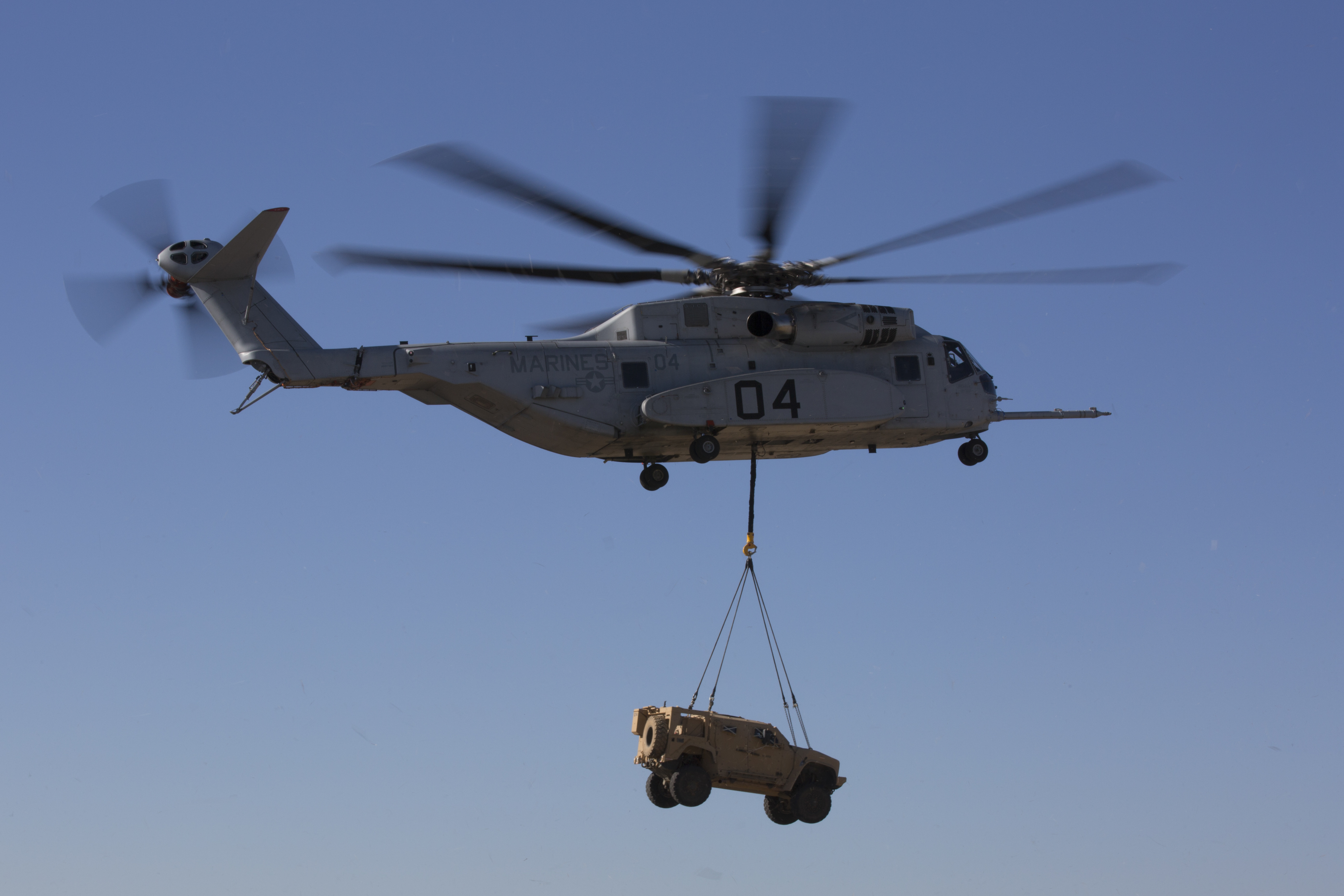
This post has been updated to include additional information from Naval Air Systems Command.
Lawmakers approved a second batch of funding to supplement the Marine Corps’ CH-53K heavy lift helicopter program, which saw its flight test program overhauled after challenges with technologies and executing the test requirements efficiently.
Defense committees on Capitol Hill approved this second reprogramming request for $79 million last week, after having already approved $79 million in April. The money will fund ongoing testing and engineering efforts for the King Stallion helicopter, which fell behind last year as technology challenges emerged and the program wasn’t ticking off its test objectives as efficiently as they might like with the flight hours they were flying.
“The [Above Threshold Reprogramming] funds will be used to facilitate continued development, testing and program progress towards correcting technical issues,” Col. Jack Perrin, the program manager for Naval Air Systems Command’s Heavy Lift Helicopter Program Office, said in a statement.
“We are executing well to the restructured plan since the first part of the ATR was approved in April.”
In early April, Navy and Marine leaders told the House Armed Services Committee that the test program was behind schedule but that the aircraft itself had already gone through the most strenuous tests and proven the design could conduct heavy lift missions at greater ranges and in harsher conditions than today’s CH-53E Super Stallion. They noted, though, that the service would scale back its CH-53K acquisition plans in Fiscal Year 2020, asking to buy just six helicopters instead of nine to reduce concurrency between testing and production and to compensate for the increased testing costs.
The following month, the Navy and Marine Corps awarded Sikorsky a contract for low-rate initial production lots 2 and 3, with the contract covering 12 helicopters instead of the previous plan to buy 14 due to cost growth and ongoing technical challenges. The contract included language that would obligate Sikorsky to ensure that all the helicopters coming off the production line addressed any currently known deficiencies or ones that may be identified in the remaining test program.
Despite the delays in testing and ongoing efforts to fix technical challenges such as an exhaust gas re-ingestion problem, Sikorsky has said that the program is still on track to meet its first-deployment date. The helicopter is slated to undergo sea trials next spring aboard an amphibious ship, with initial operational test and evaluation taking place in early 2021 and then an initial operational capability declaration in time for a deployment in 2023 or 2024.
According to NAVAIR, in April lawmakers requested additional information from the Marine Corps and the director of Operational Test and Evaluation regarding the program’s progress toward addressing exhaust gas re-ingestion and other technical challenges facing the program before they would consider approving the remaining $79 million in reprogramming funding. Navy, Marine Corps and industry leaders have been overwhelmingly positive about the program’s development since the test program overhaul, and lawmakers agreed to provide the second half of the funding to allow the progress to continue.
Bill Falk, Sikorsky’s CH-53K program director, said in a statement this week that “we are pleased that Congress approved the remaining development funds from the U.S. Marine Corps request to support continued test in the CH-53K heavy lift helicopter program. This approval demonstrates continued confidence the legislative branch and the U.S. Marine Corps have in Sikorsky to deliver the critical capability that the King Stallion aircraft brings to support heavy lift missions in the future operating environment.”





